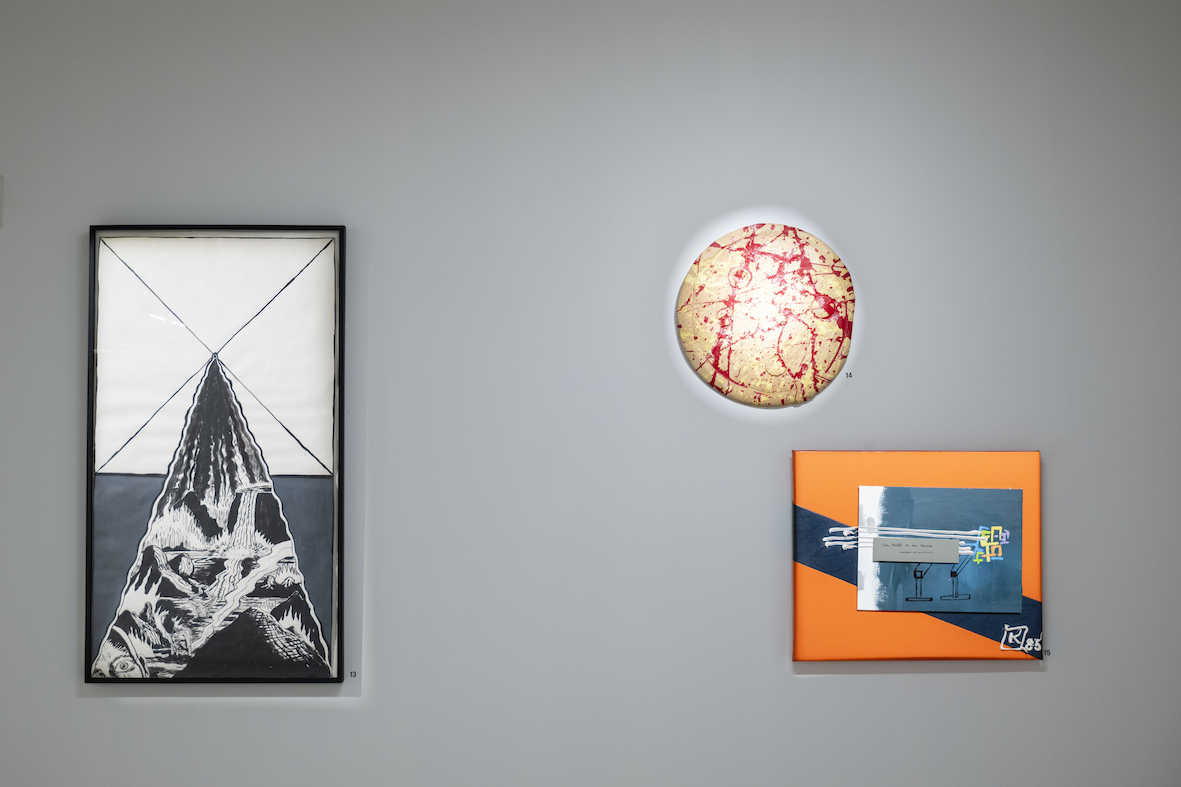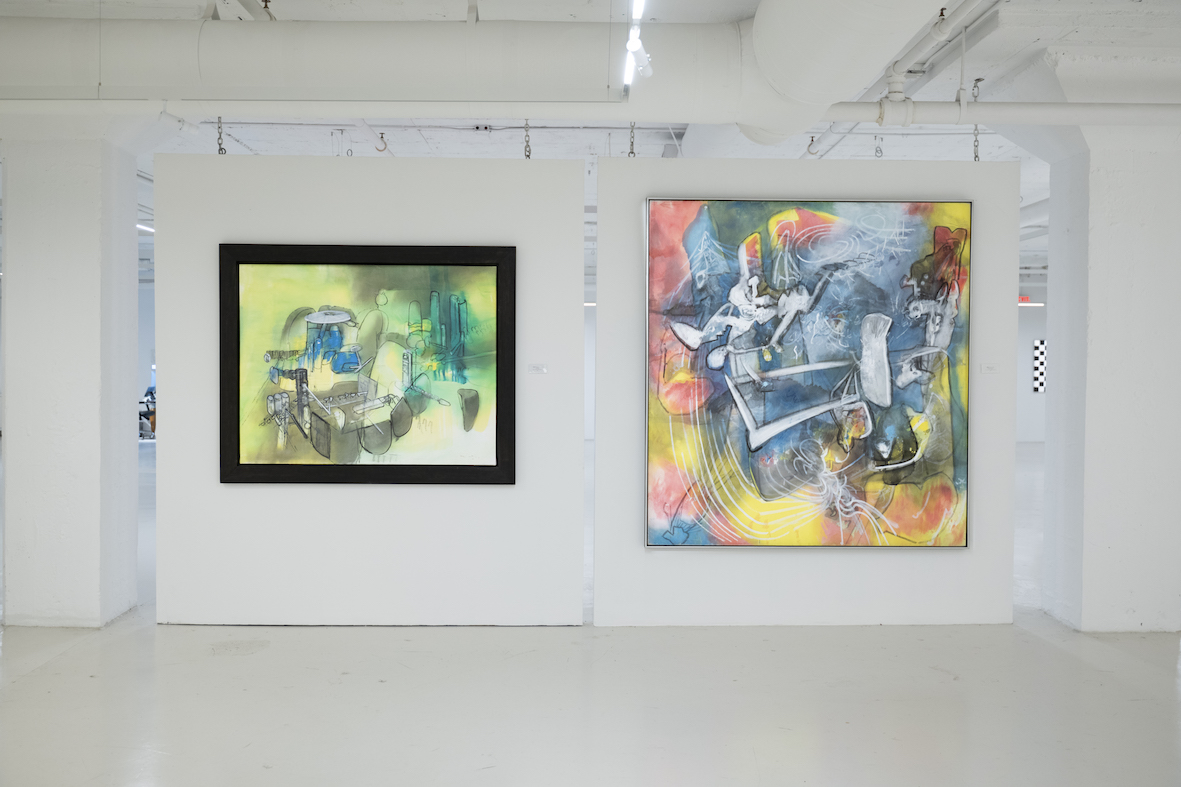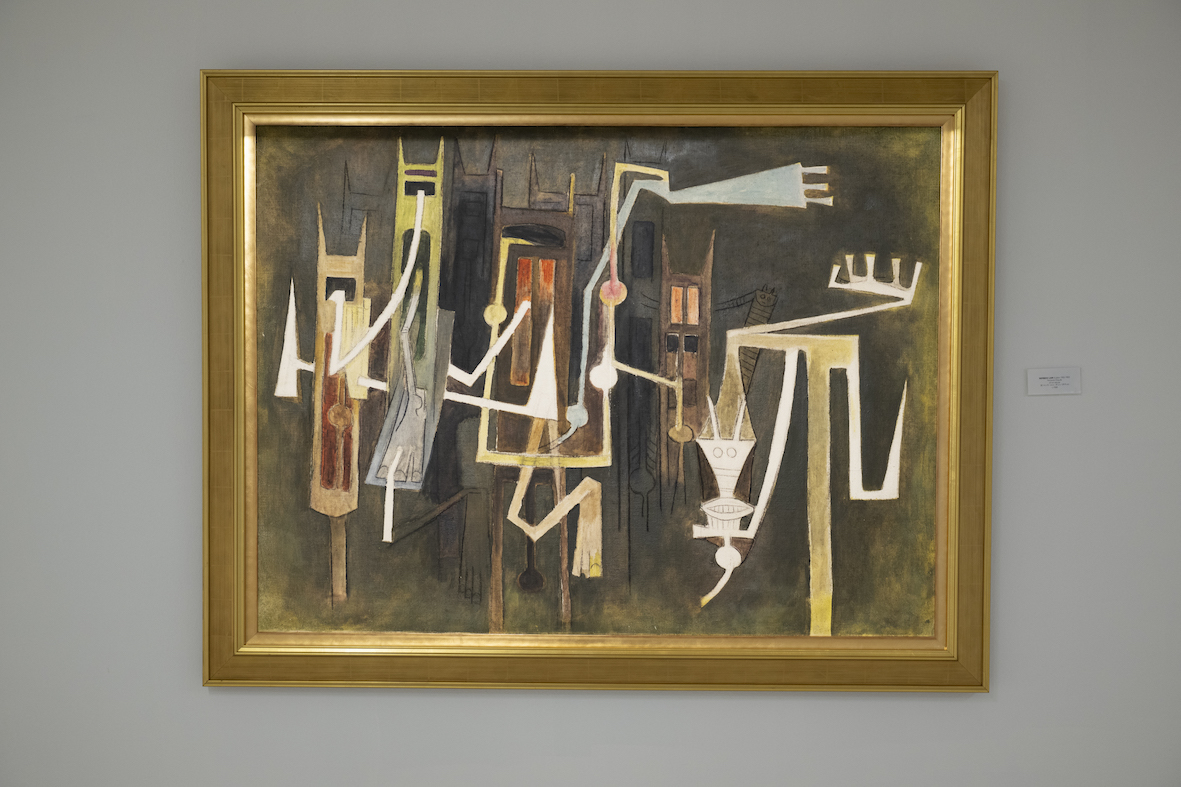In a time increasingly shaped by global interconnectedness and cultural hybridity, Gary Nader Art Centre proudly presents Visual Rhythms: A Global Tapestry of Contemporary and Modern Art, an exhibition celebrating the convergence of generations, geographies, and artistic disciplines. Opened on April 30 and on view through June 30, 2025, Visual Rhythms marks a significant milestone in the gallery’s dynamic evolution toward a more contemporary program, designed to inspire and engage a new generation of collectors and art enthusiasts.
With a curatorial vision that bridges the historical and the avant-garde, the exhibition traverses a wide spectrum of aesthetic and conceptual approaches—from the optical precision of kinetic abstraction to the visceral energy of urban art. Works by modern masters such as Wifredo Lam and Carlos Cruz-Diez are showcased alongside influential contemporary voices like Adam Pendleton, Marina Perez Simão, and Os Gêmeos, artists who expand and transform the legacies of their predecessors through personal narrative, political critique, and the visual textures of everyday life.
Welum had the opportunity to talk to Milla Nader and Noah Nader, children of the renowned gallerist Gary Nader, who have stepped into leading spokesperson roles at the Gary Nader Art Centre. Both were directly involved as curators of this exhibition, bringing a dynamic and youthful perspective that seeks to connect with new audiences.
Visual Rhythms bridges modern and contemporary art—how did you approach curating a show that balances historical legacies with fresh, avant-garde perspectives?
Milla: We approached the exhibition by focusing on shared ideas instead of strict timelines. Rather than dividing artists by generation, we looked at how they explored similar questions about form, identity, and perception. That allowed us to place artists from different periods in dialogue with each other in a way that felt thoughtful and natural. Pairing artists like Wifredo Lam and Carlos Cruz-Diez with Marina Perez Simão and Adam Pendleton helped us highlight how foundational ideas are continually revisited and reimagined.
What themes or artistic movements stood out to you as particularly relevant for today’s audiences?
Noah: A few themes felt especially present, like the exploration of personal and cultural identity, and the process of reclaiming or piecing together fragmented stories. Many of the artists, like Os Gêmeos or Vik Muniz, are drawing from their own backgrounds or political moments, and using art to reflect on where they come from. Movements like conceptualism, street art, and abstraction really stood out to us, not only for their visual impact but also because they raise emotional and intellectual questions that feel very timely.
How do you see this exhibition shaping the future direction of the Gary Nader Art Centre?
Milla: This show marks an exciting shift. It keeps the gallery rooted in its foundation but opens things up to new voices, formats, and ideas. We hope it’s the beginning of a more contemporary direction that still honors the artists and movements that built that foundation. The process made us think differently about what the gallery can be, and how it can grow in ways that reflect the world around us.
As young curators stepping into leadership roles, what has been the most exciting or challenging part of this experience?
Noah: The most exciting part has been contributing to something that feels both personal and public. It’s our first curatorial project, and we’ve learned so much from it. There were moments of self-doubt, especially because we care so much about doing it right. Finding the balance between honoring what the gallery has stood for and bringing in new energy has been both a challenge and a valuable learning experience. Seeing everything come together was a moment we won’t forget.
Can you share a moment during the curatorial process that was particularly meaningful or eye-opening for you?
Milla: One moment that stuck with me was when we were in the final stages of laying out the works in the space and started noticing connections between pieces. Works that felt very different in theory began to speak to each other side by side. Seeing that come to life after months of planning was surreal. It made me realize how much of the curatorial process is about leaving space for the unexpected. That moment shifted how I understood the role of a curator.
How do you hope younger audiences will engage with the works in Visual Rhythms?
Noah: We hope they walk in and feel like they belong here. Art spaces can be intimidating sometimes, especially for younger people, and we wanted to create something that felt open and welcoming. A lot of the work in the show speaks to emotion and lived experience, so we hope people connect with it in their way. Whether it’s through curiosity, humor, or reflection, we want visitors to feel there’s something here for them.
How did you decide which artists to include, and what conversations do their works create within the exhibition?
Milla: We looked for artists whose work felt layered, visually or conceptually. Some pieces are bold and loud; others are quieter but leave just as strong of an impression. The idea was to bring together a range of voices that explore different ideas but still feel interconnected. As we placed our work next to each other, certain themes and visual rhythms began to emerge. Those unspoken conversations between the pieces helped shape the exhibition in a organic way.
What strategies are you exploring to make art more accessible and engaging for younger collectors and enthusiasts?
Noah: We’re focusing on sharing context across multiple platforms—whether that’s through social media, tours, or casual conversations during openings. We want people to feel welcomed, not intimidated. It’s about showing that engaging with or collecting art isn’t reserved for experts—it’s for anyone with a sense of curiosity and a connection to the work.
You grew up immersed in the art world, with Gary Nader as both your father and a leading figure in the industry. As you step into curatorial roles and begin to carve out your path, do you see his legacy as a guiding force, a challenge, or perhaps a mix of both? How do you balance honoring his work while bringing your voice and vision to the Gary Nader Art Centre?
Milla: It’s definitely a mix of both. We’ve learned so much just by watching how he works and seeing the level of passion and commitment he brings to everything he does. That foundation has been incredibly valuable. At the same time, we want to contribute our perspective and bring something new to the table. Our generation is seeing and experiencing the world differently, and we think that should be reflected in the work we do. The goal is not to change the legacy, but to add to it and carry it forward in a way that feels true to who we are.
For more info : www.garynader.com




